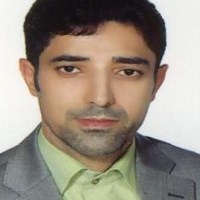The Effects of Emotion-Focused Therapy on Marital Happiness and Sexual Functioning
Marriage and specifically emotional exchange between couples is among the strongest positive emotions and can increase their happiness. Marital Happiness (MH) is the main factor in predicting overall happiness in men and women. Given the complex nature of marital relationships and the effects of emotions, needs, fears, and attachments on coupleschr('39') relationships, it is essential to develop effective interventions to help couples. Furthermore, numerous couples seek help from couple therapists and family counselors due to problems related to MH and Sexual Functioning (SF). Therefore, to treat and solve marital problems, effective methods on MH and SF should be revived. This study aimed to survey the effects of Emotion–Focused Therapy (EFT) on MH and SF.
This was a quasi–experimental study with a pretest–posttest–follow–up and a control group design. The statistical population of the present study consisted of all couples in Tehran City, Iran, in 2019. The study participants were selected by the convenience sampling method. The sample size was calculated by G*Power software. The required number of samples was calculated based on similar studies, considering the effect size of 0.40, confidence level of 0.95, test power of 0.80, and the rate of loss of 10% per group of 15 subjects. The study samples included 30 couples who obtained scores below the cut–off point in the questionnaires, including the Female Sexual Function Index (score 26), the International Index of Erectile Function (lower than score 35), and the Marital Happiness Scale (score 50). The study participants who met the inclusion/exclusion criteria of the research were recruited from psychology clinics and randomly assigned to the experimental and control groups (n=15 couples/group). The study groups were matched in terms of age, gender, and educational level. The inclusion criteria of the research were couples who have been married for 3–10 years; a minimum diploma education; no biopsychological problems, and volunteering to participate in the research. Besides, the exclusion criterion was the non–observance of the group rules, i.e., stated in the first session and absence from >1 sessions. The research tools were conducted in pretest, posttest, and follow–up phases. After completing the pretest, the intervention group received 11 two–hour weekly sessions based on Johnson et al.’s (1999) training package; however, the controls received no intervention during this period. The repeated–measures Analysis of Variance (ANOVA) and Bonferroni posthoc test were used in SPSS for data analysis. The significance level of the tests was set at 0.05.
The obtained results indicated that the ANOVA data of MH was significant for time effect (p<0.001) and group effect (p<0.001) and the effect size of a group intervention for MH equaled 0.64; Additionally, ANOVA data of male’s SF for time effect (p<0.001) and group effect (p<0.001) was significant and the effect of a group intervention for male SF was measured as 0.44. Additionally, ANOVA data of female’s SF was significant for time effect (p<0.001) and group effect (p<0.001), and the effect size of a group intervention for female’s SF was equal to 0.59. Thus, MH and SF of men and women suggested a significant difference between the experimental and control groups during the research stages, which indicated the effect of the intervention. Furthermore, the posttest scores of MH in the experimental group were higher than those of the pretest (p<0.001). The follow–up scores of MH were significantly different from those of the pretest and posttest stages (p<0.001). Moreover, the posttest scores of male’s SF in the experimental group were higher than that of the pretest (p<0.001). Male’s SF follow–up scores were significantly different from those of the pretest and posttest stages (p<0.001). Additionally, the posttest scores of female’s SF in the experimental group were lower than those in the pretest (p<0.001). Female’s SF scores of the follow–up stage were significantly different from the pretest stage (p<0.001); however, no significant difference was observed between the posttest and follow–up stages (p=0.486). The collected results signified the effectiveness of EF couple therapy in the follow–up phase concerning MH and SF, i..e, significantly increased and continued. However, it remained stable for womenchr('39')s SF.
Based on the present study findings, EFT is an effective method to increase MH and SF in couples. Therefore, it is recommended that counselors and therapists use EF couple therapy to improve MH and SF in couples.
- حق عضویت دریافتی صرف حمایت از نشریات عضو و نگهداری، تکمیل و توسعه مگیران میشود.
- پرداخت حق اشتراک و دانلود مقالات اجازه بازنشر آن در سایر رسانههای چاپی و دیجیتال را به کاربر نمیدهد.


